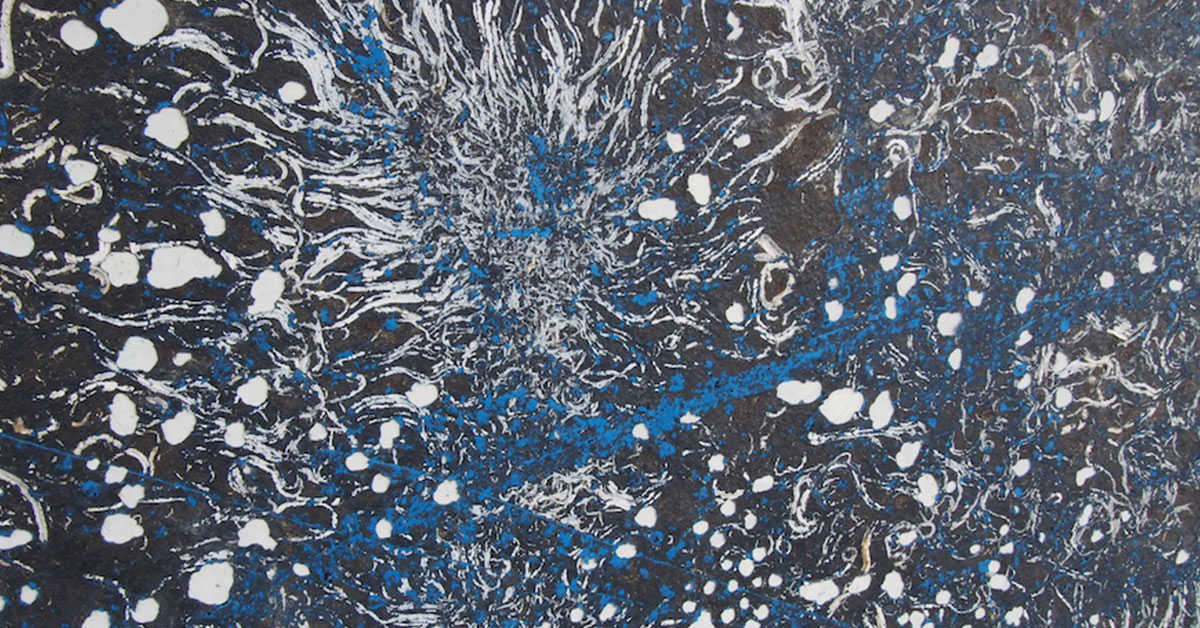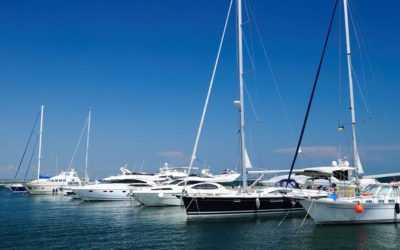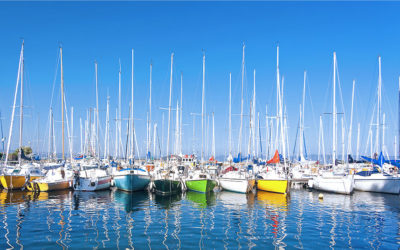Boat osmosis is frightening, sometimes irrationally so! It worries both owners and future buyers of a polyester boat. Here’s what you need to know!
Polyester is a composite material, i.e. it is made up of several elements. The fabrics that form the weave are impregnated with resin, while the surface is composed of a gelcoat that provides protection from the outside environment. Residues, acid and alcohol especially, are trapped inside the material during the catalysis process. The difference in concentration between these compounds and seawater causes the seawater to eventually soak through the gelcoat and impregnate the polyester. Gradually, the volume of liquid increases to the point of blistering the surface layer.
1. High and dry means no osmosis on my boat!
The gelcoat is therefore no longer perfectly watertight and, if you’re not careful, all the polyester ends up saturated with moisture to varying degrees. The best way to prevent osmosis from damaging your boat is to take it out of the water! Transportable boats and generally all those that winter ashore for more than 2 months a year don’t suffer this phenomenon. When dry docking, you absolutely must rinse the hull with fresh water to prevent any salt from retaining moisture.

2. It’s better to plan for osmosis appearing!
For boats that remain afloat, shipyards recommend applying a preventive anti-osmosis treatment every 10 years. This involves stripping all the antifouling layers, rinsing thoroughly with fresh water and carefully checking the hull’s humidity level before you do anything else. You can measure this using a moisture tester, a device used by marine surveyors, but also by lots of professionals.
This check is vital. In fact, applying a waterproof treatment to waterlogged hulls will only trap moisture in the fabric. When buying second-hand, we strongly recommended that you are assisted by an independent expert, who can, among other things, ensure that the hull’s humidity level is acceptable.
3. Make a prognosis to avoid boat osmosis
Blisters are the most obvious sign that the disease is in an advanced stage! It’s annoying, but not a case for panic: except in exceptional cases, it’s a sign of ageing and not of decay… The disease progresses slowly and the prognosis is encouraging!
On the other hand, the treatment is lengthy, tedious and quite expensive. Once out of the water, the entire hull must be stripped bare. The porous gelcoat should removed, a painful and messy operation that should be entrusted to a competent and well-equipped professional. Once the polyester is bare and in open air, it should washed with fresh water to rinse off the acetic acid, the vinegar-scented liquid permeating it.
Then begins the lengthy drying phase. This can last from 6 to 12 months, during which the surface will have to be rinsed several times. Once the tester displays acceptable moisture readings, the hull should be coated to restore the surface to a good condition and finally treated with a durable epoxy coating.

4. What precautions should you take to minimise boat osmosis?
- Regular dry docking will prevent the polyester from becoming saturated with moisture. This will reassure a significant proportion of boaters and encourage those with reasonably sized boats they can overwinter in a dry dock.
- Some units from the early 90’s are more sensitive to osmosis than others. When buying second-hand, make sure you get advice from an independent professional with the right measuring tools.
- Before launching a new boat for the first time, don’t skimp on the epoxy primer which provides a watertight base between the gelcoat and the antifouling layer.
- Applying an anti-osmosis treatment to your boat isn’t going overboard either!
Faced with the reality that your boat will experience osmosis, you may react in different ways. There are the constant worriers, who will invest in their own equipment and work out the hygrometric curve of their boats! Then there are those who think “no blistering, no osmosis”! ». Then there are those who enjoy pleasure of sailing to the fullest, while being aware that any abuse will end up damaging their boat. They know that if they let the boat gradually soak up water, sooner or later they won’t be sailing any more. They know their boat needs to stop drinking and go on a detox so that it can get back into shape.
Discover all the latest used boats for sale available on Band of Boats!
The article is written by Olivier Chauvin.

